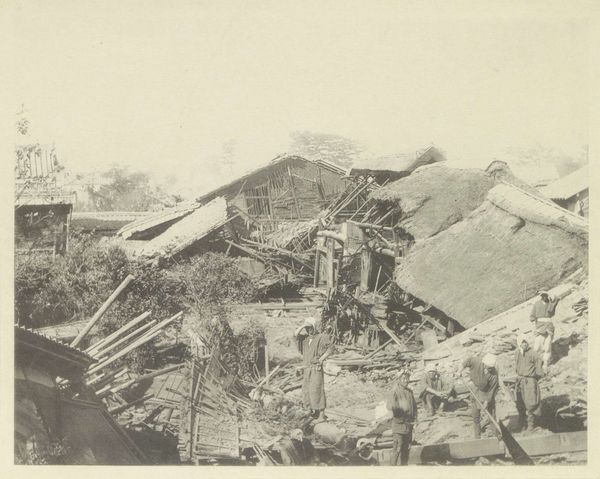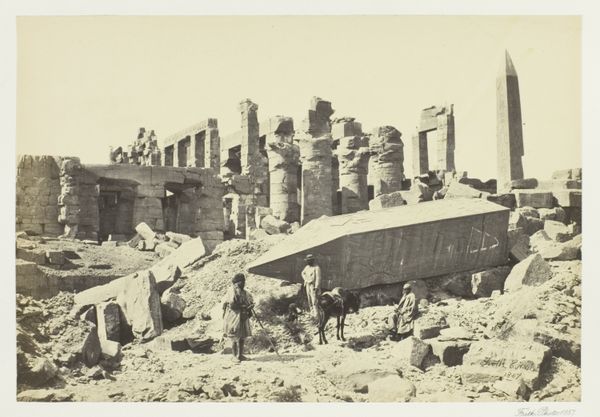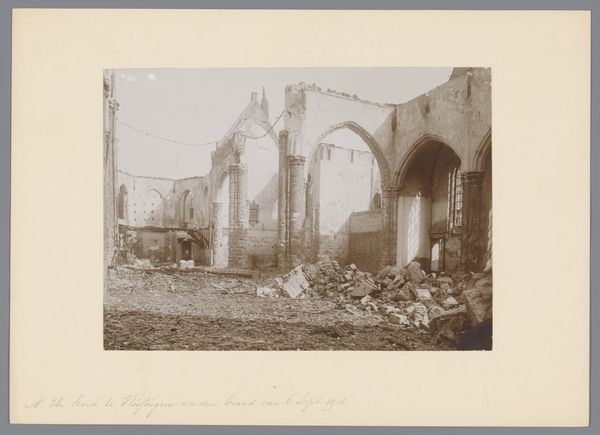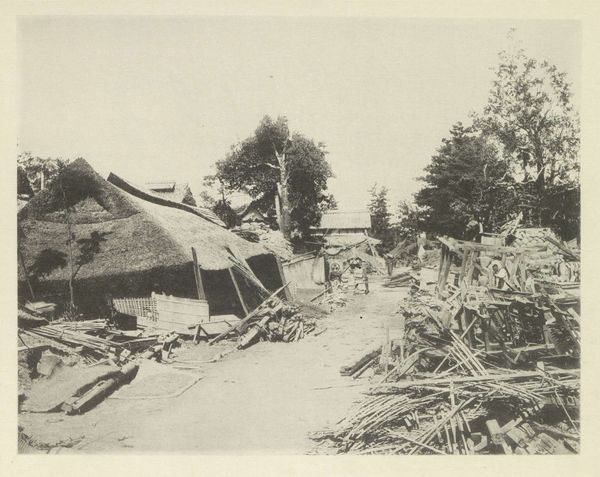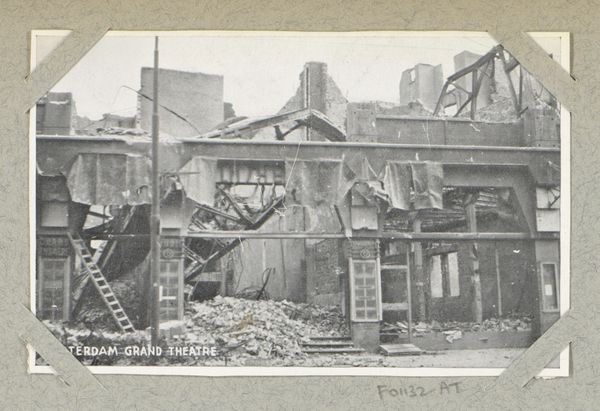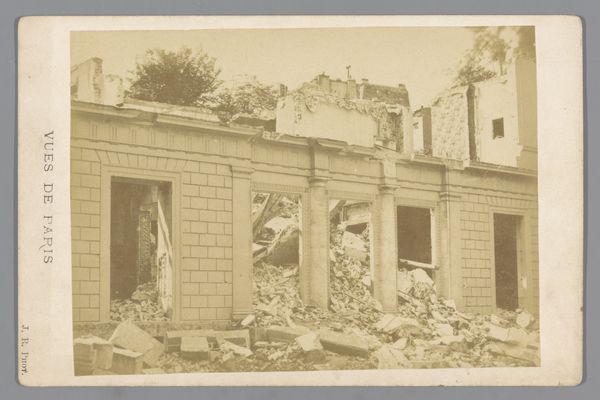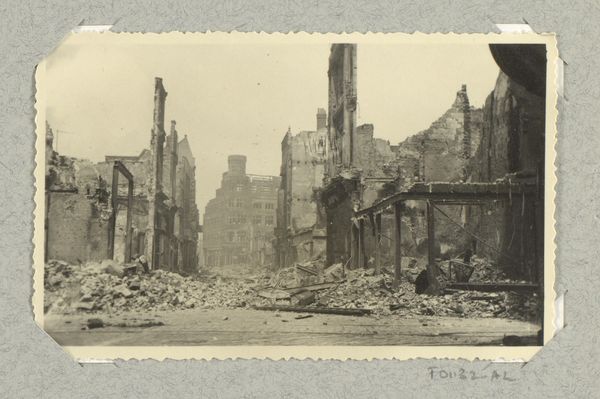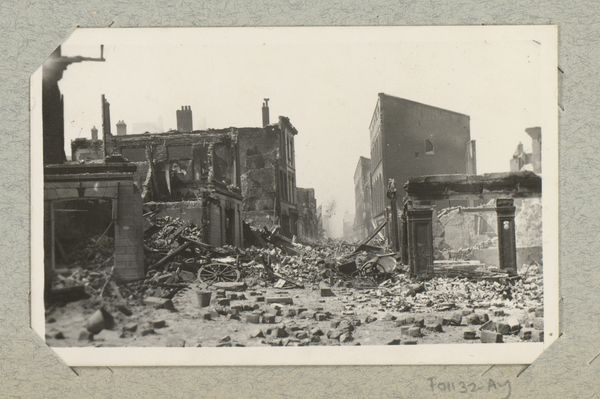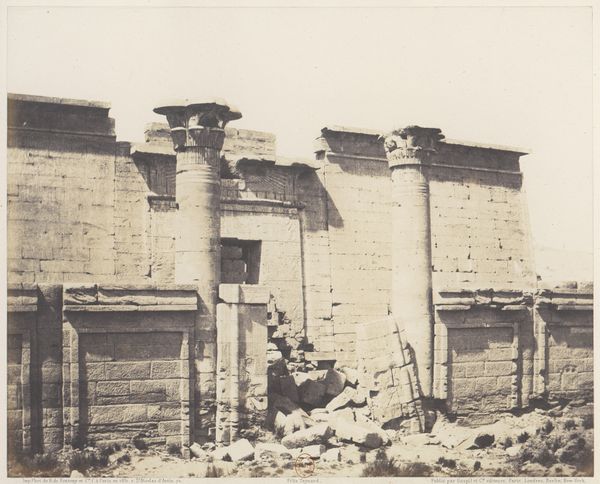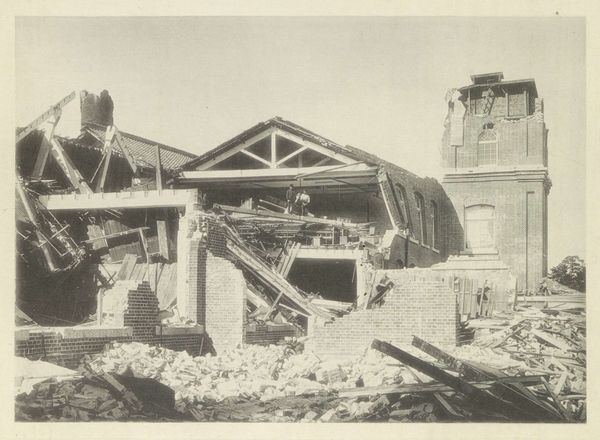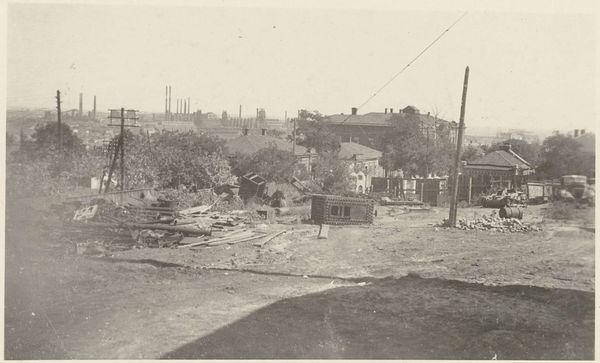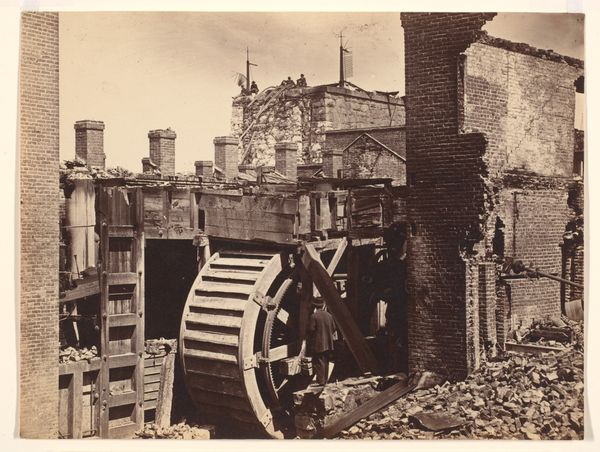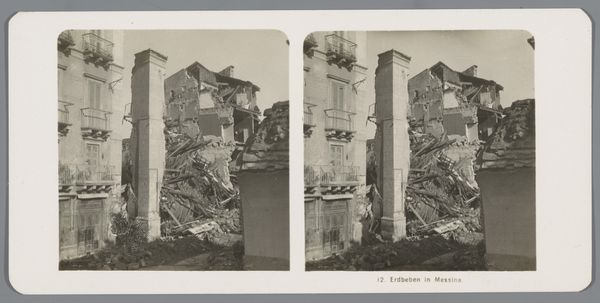
Dimensions: Image: 19.2 x 24.9 cm (7 9/16 x 9 13/16 in.) Mount: 34.7 x 47.5 cm (13 11/16 x 18 11/16 in.)
Copyright: Public Domain
Editor: This is "Maisons de la porte d'Auteuil" by Charles Soulier, a gelatin-silver print from 1871, currently at the Met. The scene is dominated by what appears to be war-torn buildings, evoking feelings of loss and destruction. How do you interpret this work, especially considering the historical context? Curator: Precisely. It's a potent reminder of the Paris Commune of 1871, a period of intense social and political upheaval. These aren't just buildings; they're testaments to a brutal struggle. What does it say to you that Soulier chose to document this destruction rather than, say, the grand boulevards of Haussmann's Paris? Editor: I guess it’s a conscious decision to show a side of Paris that’s not often celebrated or romanticized. A deliberate commentary of war, a kind of critical urbanism? Curator: Exactly. Think about the power structures at play. The Commune was ultimately crushed, its ideals suppressed. Photography, at this time, was emerging as a powerful tool, and its employment to document war damage becomes part of the broader narrative on resistance. It's also a study in the power dynamics and resilience of city inhabitants in moments of crisis. How might these images have affected Parisians then, and how do they speak to us today, in an era marked by conflict and displacement? Editor: It is very relevant when thinking about contemporary photography of conflict zones. Do you think Soulier took a stand with this work? Curator: Possibly, or maybe he wanted to chronicle history. But documenting devastation can be powerful if it stirs debate and brings to light narratives suppressed in mainstream retellings of this historic event. This photo pushes me to investigate the lives impacted. What has been lost? What are the futures these buildings may have promised but didn't provide? Editor: It definitely gives a new lens for viewing Paris in 1871. I had not considered that it was tied into an account on social movements of its time. Curator: It reminds us that art doesn't exist in a vacuum, and can give insight into our lived reality.
Comments
No comments
Be the first to comment and join the conversation on the ultimate creative platform.
